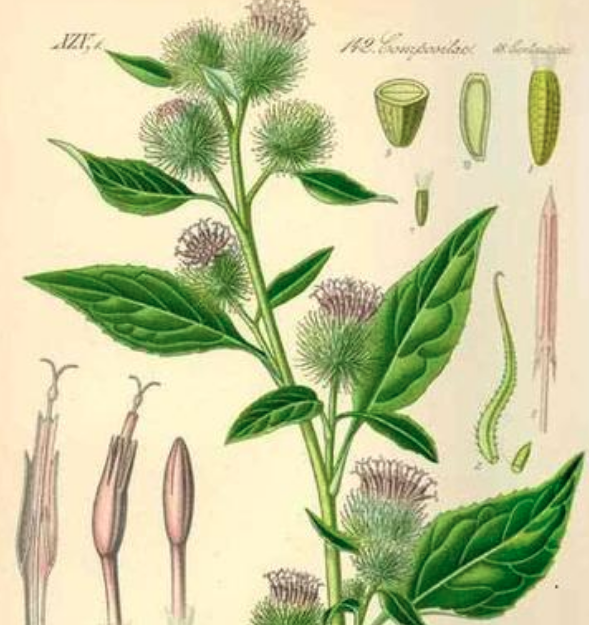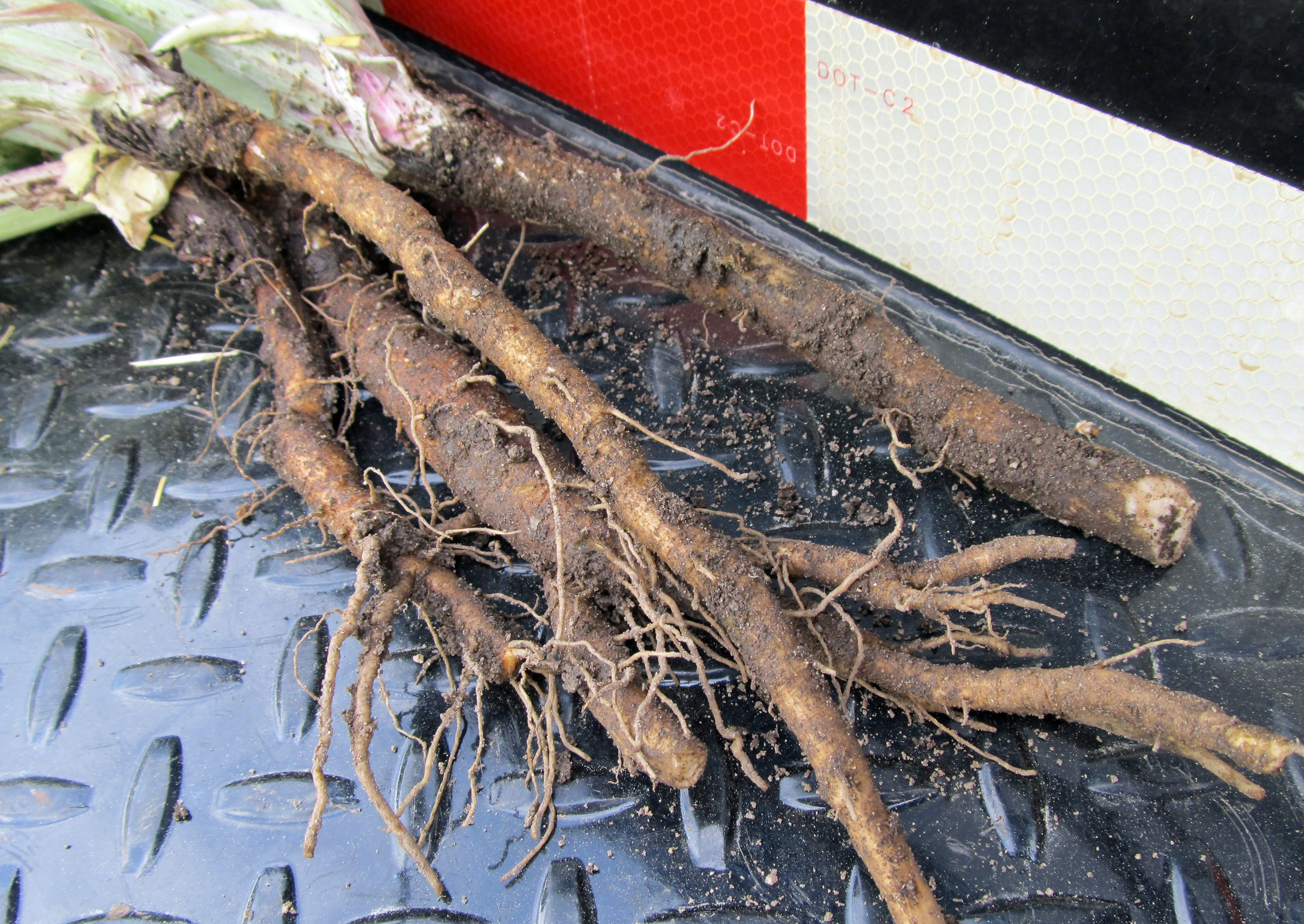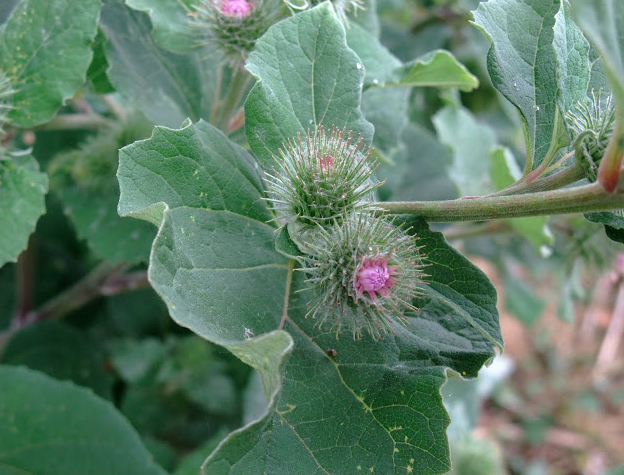Burdock Weed: The Weed That's
Burdock Weed: The Weed That's More Than Just a Weed
Burdock weed is a common sight in many parts of the world. It's a biennial plant that grows up to six feet tall, with large, heart-shaped leaves and spiky purple flowers. Burdock is often considered a weed because it can be invasive and difficult to control. However, it's also a valuable medicinal plant with a long history of use in traditional Chinese and European medicine.
In this blog post, we'll take a closer look at burdock weed. We'll discuss its history, medicinal properties, and how to use it. We'll also explore some of the challenges associated with burdock, such as its invasiveness and potential to cause dermatitis.
History of Burdock
Burdock weed has been used medicinally for centuries. The first recorded use of burdock dates back to 2737 BC, when it was used in traditional Chinese medicine. Burdock was also used by European herbalists in the Middle Ages.
The name "burdock" comes from the Old English word "bearduc," which means "bearded thistle." This refers to the plant's barbed seedpods, which cling to clothing and fur. Burdock is also known by other names, such as beggar's buttons, clotbur, and gobo.
Medicinal Properties of Burdock
Burdock has a wide range of medicinal properties. It's a powerful detoxifier, and it's been shown to help remove toxins from the liver, kidneys, and blood. Burdock is also a good source of antioxidants, which can help protect the body against damage from free radicals.
In addition to its detoxifying and antioxidant properties, burdock also has anti-inflammatory, antibacterial, and antiviral properties. It's been used to treat a variety of conditions, including eczema, acne, psoriasis, arthritis, and high blood pressure.
How to Use Burdock
Burdock can be used in a variety of ways. The leaves, roots, and seeds can all be used to make teas, tinctures, and other herbal preparations. Burdock root is also a common ingredient in Chinese herbal medicine.
To make a burdock tea, simply steep 1-2 teaspoons of dried burdock root in hot water for 10-15 minutes. You can also add burdock root to soups, stews, and stir-fries.
Challenges of Burdock
While burdock has many medicinal benefits, it can also be a challenge to manage. Burdock is a highly invasive plant, and it can quickly spread to new areas. It's also a potential allergen, and some people may experience dermatitis after coming into contact with the plant.
If you're considering using burdock, it's important to be aware of these challenges. If you have any concerns, be sure to talk to your doctor before using burdock.
Conclusion
Burdock weed is a complex plant with a long history of use. It has both medicinal and invasive properties, and it's important to be aware of both before using it. If you're looking for a powerful detoxifier and antioxidant, burdock may be a good option for you. However, if you're concerned about its invasiveness or potential to cause dermatitis, it's best to avoid it.
Burdock weed is a common plant that is often considered a nuisance. However, it is also a powerful medicinal herb that has been used for centuries to treat a variety of health conditions. If you are interested in learning more about burdock weed, I encourage you to visit Garden Wiki. This website provides comprehensive information about the plant, including its history, uses, and potential side effects.
In addition to providing information about burdock weed, Garden Wiki also offers a variety of resources that can help you get the most out of this medicinal herb. For example, the website includes recipes for burdock tea and tincture, as well as instructions on how to make burdock oil.
I hope you will visit Garden Wiki and learn more about this fascinating plant. Burdock weed has the potential to offer a variety of health benefits, and I believe that everyone should have the opportunity to learn about it.
FAQ of burdock weed
- What is burdock weed?
Burdock weed is a tall, leafy plant with burrs that stick to clothing and fur. It is native to Europe and Asia, but it is now found in many parts of the world. Burdock has been used medicinally for centuries, and it is also a popular ingredient in traditional Chinese medicine.
- What are the health benefits of burdock weed?
Burdock weed has a number of potential health benefits, including:
- Anti-inflammatory: Burdock root contains compounds that have anti-inflammatory properties. This may help to reduce inflammation in the body, which can be beneficial for a variety of conditions, including arthritis, eczema, and psoriasis.
- Diuretic: Burdock root is a diuretic, which means that it helps to increase urination. This can help to flush toxins out of the body and improve kidney function.
- Blood purifier: Burdock root is said to help to cleanse the blood and remove toxins. This may be beneficial for people with acne, eczema, or other skin conditions.
- Immune system booster: Burdock root contains compounds that may help to boost the immune system. This may help to protect the body against infection.
- Antioxidant: Burdock root is a good source of antioxidants, which can help to protect the body against damage caused by free radicals.
- How can I use burdock weed?
Burdock weed can be used in a variety of ways, including:
- Tea: Burdock root tea is a popular way to consume burdock. It can be made by steeping dried burdock root in hot water for 5-10 minutes.
- Tincture: Burdock root tincture is another way to consume burdock. It is made by soaking dried burdock root in alcohol for several weeks.
- Capsules: Burdock capsules are a convenient way to take burdock. They are available in most health food stores.
- Topical application: Burdock root can also be applied topically to the skin. This can be done by making a poultice of burdock root or by using burdock oil.
- Is burdock weed safe?
Burdock weed is generally considered to be safe when used in moderation. However, it is important to note that burdock can interact with certain medications, so it is important to talk to your doctor before taking burdock.
- Where can I find burdock weed?
Burdock weed can be found in many parts of the world, including Europe, Asia, and North America. It is often found growing in fields, along roadsides, and in other disturbed areas. Burdock root can also be purchased in most health food stores.
Image of burdock weed
5 different images of "burdock weed" from Pinterest:
- Image 1: A close-up of a burdock leaf, showing its distinctive lobed shape and hairy underside.

- Image 2: A whole burdock plant, showing its large, prickly burrs.

- Image 3: A burdock root, which is a popular medicinal and culinary ingredient.

- Image 4: A burdock flower, which is small and white.

- Image 5: A burdock seed head, which is covered in small, hooked burrs.

Post a Comment for "Burdock Weed: The Weed That's"